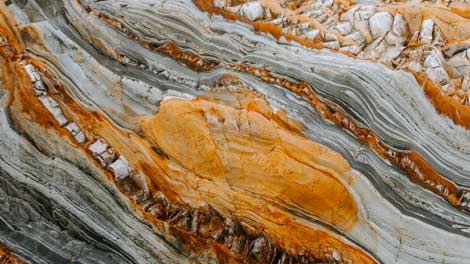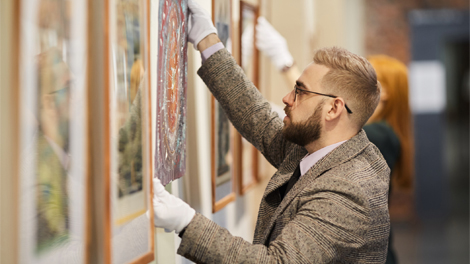Justin Flach, managing director of wealth strategy with Ascent, says that he has noticed many affluent clients view collectibles as a viable investment option. “Academic research has shown that artwork or any other collectible can serve as a countercyclical holding during times of market volatility,” he says. “But keep in mind that artwork is generally considered a long-term investment, so you should be prepared to hold onto pieces for years if necessary.”
Investing in art: How do you purchase artwork?
Artwork can be purchased via primary or secondary markets. The former consists mainly of art galleries and art fairs, while the latter consists mainly of auction houses. Sotheby’s and Christie’s are two of the better-known art auction houses, while TEFAF New York, Art Toronto and Frieze London are a few well-known art fairs. There are also numerous local art fairs featuring works by lesser-known artists that may prove to be good investments.
Hatinen recommends working with reputable art galleries and auction houses that have performed due diligence on art pieces. “Unfortunately, there’s a lot of theft and fraud in the art world,” he says. “In a worst-case scenario, you could end up having to forfeit ownership of artwork you’ve purchased if you can’t prove provenance.”
One way to lessen this risk is to purchase fractional shares of artwork instead of the full piece itself through a fractional ownership platform. You would receive a percentage of the proceeds when the piece later sells at a profit. With this strategy, research and due diligence have been performed by a qualified expert. Fractional ownership may also provide more liquidity, since you can trade shares with other investors on the platform.
Art and taxes: How is art taxed?
Artwork is subject to special rules when it comes to taxation, which can get complex. First, you’ll pay sales tax when you purchase a piece of artwork. In the U.S., tax on art sales vary from state to state, with no sales tax in Montana, New Hampshire and Oregon. If the artwork is shipped to another state after it’s purchased, you’ll pay use tax instead of sales tax.
You can avoid sales and use tax by immediately shipping artwork to a freeport for storage. “But this eliminates one of the biggest benefits of buying artwork: displaying and enjoying it in your home or elsewhere,” notes Flach.
When you sell artwork that you’ve owned for more than one year, you’ll pay capital gains tax on any appreciation at the rate of 31.8%, not the preferential 20% capital gains rate. “So, you’ll need to earn an extra 11.8% return just to cover the additional capital gains tax,” says Flach. If you sell artwork that you’ve owned for less than one year, you’ll pay tax on appreciation at ordinary income tax rates, which are as high as 37%.
What is the art tax loophole?
A special rule called the related-use rule applies when donating artwork to charity. In short, the charity must use the artwork as part of its charitable purposes (such as a museum) for you to receive a full tax deduction for your donation. Otherwise, your deduction will be limited to the lesser of cost basis or fair market value.
Note that the IRS requires a qualified appraisal for donations of artwork valued at $5,000 or more. If the artwork is worth $20,000 or more, you also must supply photo documentation of the donated artwork to the IRS.
Is art tax deductible?
“As you can see, there’s a higher hurdle to deducting donations of artwork than donations of stocks and bonds,” says Hatinen.
According to Flach, you could potentially minimize estate tax exposure by donating artwork to charity after you die. Any artwork you own at your death is included in your gross estate. By donating this art instead of liquid funds to charity, your family won’t have to sell, insure and maintain the art if they don’t intend to keep it.
Seek expert assistance when investing in art
It’s critical to work with expert advisors and specialists when investing in artwork. “There are lots of potential pitfalls that could prove problematic,” says Flach. The most important thing, then, is to buy artwork that you love and want to hold on to for years to come.
Ascent can help you determine if art investing is a wise strategy for you. Contact your relationship manager or visit us online to learn more.



